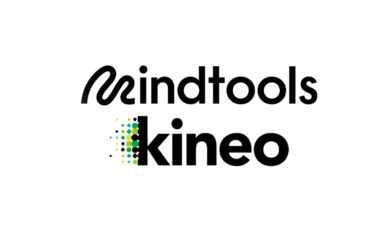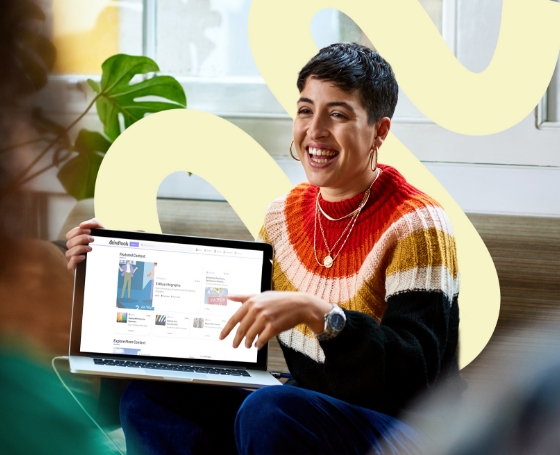Neurodiversity is nothing new. Recently, one of our team members told me about her late father who was on what some people refer to as the autism spectrum.
He was brilliant at math and his memory was like an encyclopedia, yet he had difficulty remembering his way home from downtown, which was only a 10-minute drive. He lived, worked and had a family long before the word “neurodiversity” was coined, and in those days people simply thought he was odd, a perception reinforced by the infamous Rain Man stereotype.
The term “neurodiversity” made its first appearance more than 20 years ago. It was coined by Judy Singer in her honors thesis, published in 1999. But having a name doesn’t make something less complex, or easier to identify.
Different Wiring, Different Language
Understanding the fact that different people have different “wiring” can help us all, neurotypical and neurodivergent alike, to embrace those who see things differently from ourselves. This is crucial for our comprehension of real inclusion and accessibility, where we see human potential instead of a ticked box.

Alongside my work as a Mind Tools coach, I’m a workshop facilitator and coach for inclusive and innovative teaching in schools, educational organizations, and non-profit organizations in Slovenia and across Europe. And one of the main things I’ve learned from collaborating throughout my career is that each person experiences neurodiversity differently – and has their own language for it.
That’s why it’s important that organizations create an inclusive culture that talks about and encompasses neurodiversity in all its forms – be it traits that are present from birth (and develop later in childhood and adolescence) or acquired through, for example, brain trauma.
Working With Neurodiversity
I still vividly remember working with one of my students – let’s call him Jimmy. He came to me because he was neurodivergent and needed individual help and support with his studies.
Jimmy had immense knowledge of specific topics and subjects, but he struggled with language. In particular, he wasn’t great with idioms – they were “alien” to him, he often said.
On one occasion he couldn’t stop thinking about the phrase “Are you pulling my leg?” because it felt nonsensical to him. He kept asking why somebody would pull his leg if they were teasing or joking. It was hard for him because he took things at face value, and the figurative nature of everyday language is something that still bothers him today.
In one of our early lessons, we’d been working for an hour and he’d been doing his exercises diligently. At the end of the lesson, I asked Jimmy what he thought of it, and he said that it was OK, but my writing was terrible. It was illegible, he said, and I really needed to work on it.
I paused for a moment (in reality, I wanted to laugh), but because I knew him, I understood what he meant. Jimmy couldn’t focus on the content of our lesson because I hadn’t accommodated what he needed. So he got distracted and couldn’t engage with me as he usually did. It made me more aware of what I needed to be mindful of when collaborating with him.
Embracing Neurodiversity
Not everyone can, or should have to try, to fit seamlessly into the traditional classroom or workplace.
Most schools still require students to sit, listen, pay constant attention, and go at the same pace as the rest of the class. If a student can’t do this, it can become a stressful and humiliating game of “cat and mouse,” with the teacher trying to mold the student to fit the “norm.”
Neurodiversity can be accompanied by other physical or mental challenges that make everyday tasks harder still, but society’s beliefs and attitudes play a major role, too. As I think about accommodating my students with neurodiversity, I’m reminded that they are working hard to accommodate their peers – and me – every day!
“The only disability is when people can not see human potential”
Debra Ruh, Founder of TecAccess
Increasingly, workplaces are recognizing that neurodiversity can bring new and valuable strengths and skills that teams would otherwise lack. And we can all create the building blocks for a better environment.
The main one is to be more open, understanding, and accepting of difference. Consider how each difference can contribute to the overall success, unity and uniqueness of a team.
These are skills that you don’t learn as a part of the curriculum, but you need them every day in a classroom, learning group – or workplace.
Pieces of a Puzzle?
As I learn about neurodiversity, it’s helped me to think of myself and the students or colleagues I work with as puzzle pieces. We’re irregularly shaped but complete human beings, getting on with our lives and work – all of us an integral part of the full picture.
I’ve seen students thrive when given opportunities tailored to their needs, when we’re accommodating of uniqueness, and when we put our energy into building the self-esteem of students, rather than labeling their difference.
(The term “neurodivergent” has become contentious exactly because it highlights difference and can imply “othering” or condemnation. But for some of the people it refers to, it is simply a statement of objective fact, while for others it is a proud badge of identity.)
As educators and employers, we have a choice – we can see people with ADHD, autism, dyslexia or dyspraxia as different or, worse, difficult. Or, we can see their potential, and their neurodiversity, as an advantage, and ensure they have the opportunity to thrive.
Neurodiversity and the Workplace
Workplaces that embrace neurodiversity allow employees to work and achieve goals in their own way.
All structures and processes in the organization need adjusting to embrace neurodiversity. Recruitment, retention and training all require the championing of neurodiversity.
The recruitment process often screens out neurodiverse people. The traditional traits of a “good hire,” such as presentation and writing skills, emotional intelligence, persuasiveness, teamwork, and the ability to network easily can be the very things that neurodiverse people struggle with.
Those who think differently might get overlooked by hiring managers. We need to mitigate against this.
This starts with facilitating workplace adjustments, such as allowing more time for tasks, reorganizing workspaces (setting up quiet areas, for example, or providing noise-canceling headphones), and offering assistive technology.
Next comes communication in a suitable format, regular one-on-one conversations, and a focus on digital inclusion in the workplace.
Let’s Talk About Neurodiversity
During Friday’s #MTtalk Twitter chat, we asked neurodivergent and neurotypical people to share from their lived experience. Here are all the questions we asked, and some of the best responses:
Q1. What does “neurodiversity” mean to you?
@NWarind Respecting each other’s opinions; all are intelligent.
@ZalaB_MT Neurodiversity to me means we’re expanding the norms and expectations of “normalcy”. We see, perceive and accept neurodivergent people with their whole skillset (where they excel and where they struggle) and help them thrive with what they can bring to the table.
Q2. Why is it important to talk about neurodiversity in the workplace?
@DrSupriya_MT Gone are the days when we believed not to talk about different and difficult topics. Talking is important, as it will help to clear myths and bring clarity.
@SoniaH_MT It’s important to talk about neurodiversity in the workplace because some people have grown up applying stigmas or stereotypes. Better practices and acceptance in the workplace can help combat those stigmas or stereotypes.
Q3. What’s the most important thing you’ve learned about neurodiversity at work, and how did you learn it/who from?
@DreaVilleneuve I have three neurodivergent young folks, two still at home. What I have learned is that every one of them is different, to meet them where they are. Different thought processing is eye-opening and insightful when you listen.
@MikeB_MT Being open, aware, understanding. By being open to the diverse ways people experience work and the world, I’m learning. Taking the approach of empathy and active listening truly builds understanding and relationships.
Q4. In what ways might a workplace impact its neurodiverse employees, negatively or positively?
@DrSupriya_MT It’s still a long way as we are obsessed with normal and being same. The investment of time and effort to create space for such employees is not common.
@DreaVilleneuve From the physical – open spaces, flickering lights, to communication, which is not one size, fits all, to work styles that need specific accommodations, employers should always work with the employee to assess optimum environments. A small change can impact all.
Q5. What’s the potential impact of more neurodiverse people in the workplace? Why?
@MikeB_MT Creativity and productivity blossom. Each member of the team grows in their knowledge and understanding. Team spirit improves. Teams, live, breathe, evolve. Neurodiverse team members will only help this.
@J_Stephens_CPA It was amazing seeing this in the young Cub Scouts I had the privilege of leading when my youngest son was involved. That was well before the term neurodiversity was around, but they came up with so many creative ideas over the past 15 years.
@greatergoodgeek The more diverse a workplace is – the richer the experiences and outcomes can be. Everyone has unique gifts and talents to share.
Q6. What has helped you and your colleagues to understand one another better and bridge any neurotypical/neurodivergent divide?
@ZalaB_MT It’s OK to say, “I don’t know” or “I haven’t experienced ‘xyz’ before.” Let’s find a way to learn more about it, let’s find resources and people who can help us, lead the way, and offer assistance. A lot of discomfort still stems from NOT KNOWING.
@DrSupriya_MT I read somewhere that etiquette is care and common sense! Create safe spaces to talk and ask questions.
Q7. What’s the best way for someone without lived experience of neurodiversity to find out the needs of their neurodiverse colleagues?
@greatergoodgeek Hmm – I don’t know what the best way is… but I imagine that someone without lived experiences might try to learn as much as possible first. (reading, workshops…) After that – if appropriate – some guided conversations might happen later.
@Yolande_MT Simply ask, “How would you prefer ______ ” or “What would be comfortable to you when we _______?”
Q8. How could hiring practices be changed to recruit and retain more neurodiverse people?
@DreaVilleneuve I could write a book (or look up my TEDx talk). Expectations around eye contact, dress, and how answers are formulated. Interviews from walking to informal to working. Understanding accommodations. Drop stereotypes.
@SarahH_MT Involving neurodiverse people on the recruitment panel would be a great start. This should include being involved with interview questions, tests, etc. Consider neurodiversity in the induction process, too.
Q9. What else can organizations do to be more inclusive of neurodiversity?
@SarahH_MT I’d want to create an inclusive, safe culture where it is OK to openly discuss neurodiversity and would ask staff who are neurodiverse what they need from the organization. I am keen to hear what other people suggest on this though; I honestly am not sure what else.
@Yolande_MT Customize your onboarding processes: create a buddy system that gives a neurodivergent person a trusted support person. Have decompression spaces where people can go when they feel overwhelmed or overstimulated. Make the physical environment as comfortable and inclusive as possible. Give people spaces where they can think, work and create in a way that will benefit them and the organization.
Q10. What does great advocacy for neurodiversity involve and how will you put this into practice in your workplace?
@Dwyka_Consult Don’t just include people – you run the risk of token-inclusion / window-dressing. Let people BELONG.
@SoniaH_MT Great advocacy for neurodiversity involves first educating yourself, then understanding what you’ve learned, applying what you’ve learned, and correcting previous practices moving forward.
To read all the tweets, have a look at the Wakelet collection.
Coming Up
We’d be remiss to talk about neurodiversity and not follow it up with a conversation about inclusivity.
During our next chat, we’re going to talk about more than inclusivity though – we’ll be discussing “inclusive inclusivity.” In our Twitter poll this week, we’d like to know what you think inclusivity is.
Blog Resource Links
Note that you will need to be a Mind Tools Club or Corporate member to see all of the resources in full.
How to Manage a Person With Dyslexia
Managing Highly Sensitive People
Managing People With Autistic Spectrum Disorder
How to Juggle Caregiving Responsibilities and Work





Comments
Sarah Harvey says
3 years agoI am so looking forward to this chat and I'm hoping to learn more from others about neurodiversity in the workplace. We'd love you to join us.
Sarah
Mind Tools Coach